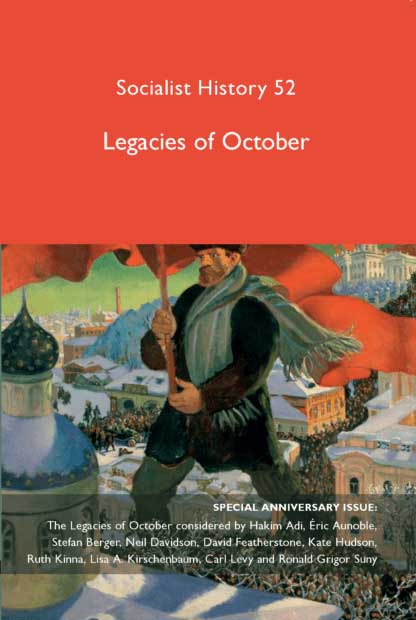
The Man Question: How Bolshevik Masculinity Shaped International Communism
Socialist History - Print ISSN 0969-4331 - Online ISSN
Volume 2017 Number 52
The Man Question: How Bolshevik Masculinity Shaped International Communism
Lisa A. Kirschenbaum
Abstract
It was a communist romance. In 1923, Croatian American communist Steve Nelson (born Stjepan Mesarsoš) met Margaret Yeager, the daughter of ‘radical’ German immigrants, at the Communist Party office in Pittsburgh. As Nelson recalled in his 1981 memoir, ‘everything happened’ very quickly, and the two married the same year. Both understood that Yeager, the ‘better educated’ and ‘more sophisticated’ of the two, would not accept a ‘passive role’ in the relationship. Indeed her mother gave the nineteen-year-old bridegroom a copy of August Bebel’s Woman and Socialism as a wedding gift. Nonetheless, they soon took on stereotypical roles. He became an important activist, while she ‘tailor[ed] her life to what was required of me’. Recognising that an outsider might ‘conclude … that Maggie accepted a traditional female role because she shared the accepted view of a “woman’s place” at the time’, Nelson assured his readers that she did not: ‘As a revolutionary she consciously gave me all the breaks, feeling this would be best for the movement’. Thus a self-consciously revolutionary union produced a paradoxically traditional marriage.
To cite this article
Lisa A. Kirschenbaum (2017) The Man Question: How Bolshevik Masculinity Shaped International Communism, Socialist History, 2017(52)
